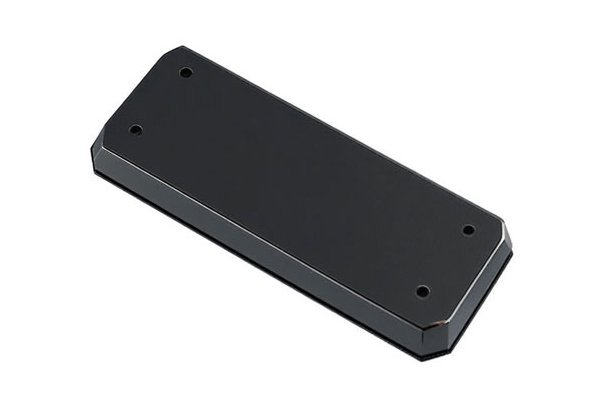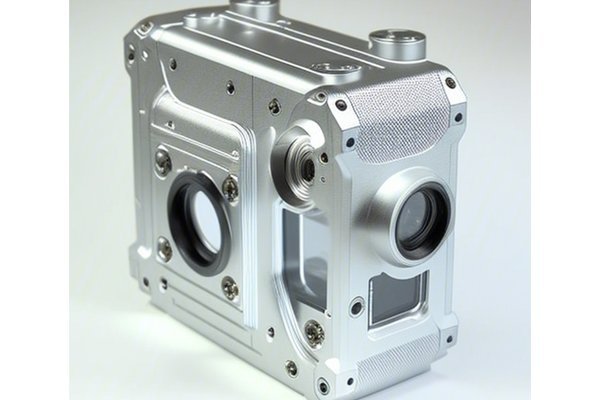Did you know that approximately 75% of manufacturers are now utilizing CNC (Computer Numerical Control) machining technologies in their production processes? As the demand for precision and efficiency in prototype manufacturing grows, the industry finds itself at a crossroads, particularly in the area of complex part production. This blog delves into the question: Is CNC turning a suitable method for creating complex prototype parts effectively and efficiently?
With the rise of advanced manufacturing techniques and the increasing complexity of parts required in various industries, understanding whether CNC turning aligns with the needs of prototype development is more important than ever.
The Basics of CNC Turning
CNC turning, the process of rotating a workpiece while a cutting tool removes material to shape it, is a cornerstone of contemporary manufacturing. This section outlines the fundamental principles of CNC turning and its capabilities.
CNC turning involves the use of a lathe, where the material is affixed to a rotating spindle. As the material spins, a stationary tool cuts away sections to create the desired shape. This technique is adept at producing cylindrical parts and is widely employed in industries ranging from automotive to aerospace.
Advantages of CNC Turning for Complex Prototype Parts
Understanding the advantages of CNC turning provides insight into its suitability for creating complex prototypes. Below are some significant benefits.
The automated nature of CNC turning machinery minimizes human error, allowing for incredibly precise dimensions and tolerances, essential for complex parts. Modern CNC lathes can achieve tolerances as tight as ±0.001 inches.
Rapid prototyping has never been easier. CNC turning allows for quick adjustments in design. Once a design is finalized, the production of prototypes can be completed in days rather than weeks.
Although the initial setup costs can be high, CNC turning is often more economical for small batch production due to its efficiency, minimal waste, and the potential for multiple prototypes to be produced simultaneously.
CNC turning can work with a range of materials, including metals like aluminum, brass, steel, and plastics. The ability to prototype in the material of choice ensures that the final product meets functional requirements.
While CNC turning is traditionally associated with cylindrical parts, advanced tooling and techniques allow for the creation of complex shapes, making it suitable for intricate prototype requirements.
Technical Challenges in CNC Turning for Complex Prototypes
While CNC turning offers numerous advantages, it is essential to also consider the challenges inherent in this process. This section discusses some primary technical difficulties associated with turning complex prototype parts.
Continuous cutting can lead to tool wear and tear. Regular monitoring and timely replacement are crucial to maintaining precision.
Different materials react differently during turning. For instance, harder materials may be more difficult to machine and may require specialized tools, leading to increased costs.
Complex parts often require intricate programming. This can lead to longer setup times and necessitate skilled operators for effective execution.

Some CNC lathes may be limited in the size of the components they can handle. For larger components, other machining methods may need to be considered.
Achieving the desired surface finish on complex prototypes can be challenging, however, proper optimization of feed rates and tool selection can mitigate this issue.
Solutions to CNC Turning Challenges
Much like any production method, CNC turning’s challenges are manageable through well-considered strategies. Below are some solutions to enhance CNC turning effectiveness for complex prototypes.
Utilize high-quality, durable cutting tools designed for specific materials to minimize wear and tear and ensure optimized performance.
Modern software enables simulation and visualization of the machining process. This allows for the identification of potential issues before actual production, saving time and resources.
Routine checks and maintenance of machinery are critical. Regularly trained operators can identify potential problems early, ensuring efficiency and quality are maintained.
Determine the best cutting speed, feed rate, and depth of cut for the specific material being machined. Optimizing these parameters can significantly improve the surface finish and reduce cycle times.
Skilled machinists familiar with complex geometrical tolerances can greatly influence the outcomes of CNC turning processes, ensuring that the final products meet or exceed specifications.
Real-World Applications of CNC Turning for Prototypes
To illustrate the effectiveness of CNC turning in complex prototype creation, let’s examine some real-world applications:
CNC turning is used to create prototype engine components, brackets, and fittings. These parts often have intricate designs and require high precision for functional testing.
Complex shapes and biocompatible materials are frequently required in the design of medical implants and instruments. CNC turning provides the necessary accuracy for these critical applications.
Prototype parts like turbine components or housings that must be lightweight yet robust are produced efficiently through CNC turning, allowing for testing and fuel efficiency assessments.
Prototype enclosures or components used in electronic devices may require fine details and smooth finishes. CNC turning can achieve custom shapes while adhering to strict tolerances.
In conclusion, CNC turning represents a highly effective method for creating complex prototype parts. With its precision, efficiency, and adaptability to various materials, it not only meets the needs of diverse industries but also stands out as a practical solution for prototype production.
As we’ve explored throughout this blog, while challenges exist, they can generally be managed with proper knowledge, commitment to quality, and advanced technology.
CNC turning does not merely keep pace with the evolving manufacturing landscape; it enables manufacturers to push the boundaries of design and functionality in prototype development.
As we look to the future, the importance of understanding and leveraging CNC turning for complex prototyping cannot be overstated. Companies that invest in this manufacturing method will not only enhance their production capabilities but will also remain competitive in their respective industries. If you’re considering CNC turning for your prototype needs, now is the time to explore how it can provide the solutions you’ve been searching for.






